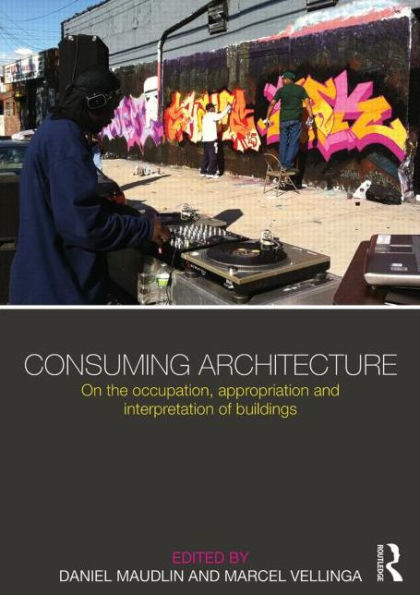Consuming Architecture: On the occupation, appropriation and interpretation of buildings
Projecting forward in time from the processes of design and construction that are so often the focus of architectural discourse, Consuming Architecture examines the variety of ways in which buildings are consumed after they have been produced, focusing in particular on processes of occupation, appropriation and interpretation. Drawing on contributions by architects, historians, anthropologists, literary critics, artists, film-makers, photographers and journalists, it shows how the consumption of architecture is a dynamic and creative act that involves the creation and negotiation of meanings and values by different stakeholders and that can be expressed in different voices. In so doing, it challenges ideas of what constitutes architecture, architectural discourse and architectural education, how we understand and think about it, and who can claim ownership of it.
1128424389
Consuming Architecture is aimed at students in architectural education and will also be of interest to students and researchers from disciplines that deal with architecture in terms of consumption and material culture.
Consuming Architecture: On the occupation, appropriation and interpretation of buildings
Projecting forward in time from the processes of design and construction that are so often the focus of architectural discourse, Consuming Architecture examines the variety of ways in which buildings are consumed after they have been produced, focusing in particular on processes of occupation, appropriation and interpretation. Drawing on contributions by architects, historians, anthropologists, literary critics, artists, film-makers, photographers and journalists, it shows how the consumption of architecture is a dynamic and creative act that involves the creation and negotiation of meanings and values by different stakeholders and that can be expressed in different voices. In so doing, it challenges ideas of what constitutes architecture, architectural discourse and architectural education, how we understand and think about it, and who can claim ownership of it.
Consuming Architecture is aimed at students in architectural education and will also be of interest to students and researchers from disciplines that deal with architecture in terms of consumption and material culture.
240.0
In Stock
5
1

Consuming Architecture: On the occupation, appropriation and interpretation of buildings
316
Consuming Architecture: On the occupation, appropriation and interpretation of buildings
316Hardcover
$240.00
240.0
In Stock

Product Details
| ISBN-13: | 9780415824996 |
|---|---|
| Publisher: | Taylor & Francis |
| Publication date: | 03/06/2014 |
| Pages: | 316 |
| Product dimensions: | 6.88(w) x 9.69(h) x (d) |
About the Author
From the B&N Reads Blog
